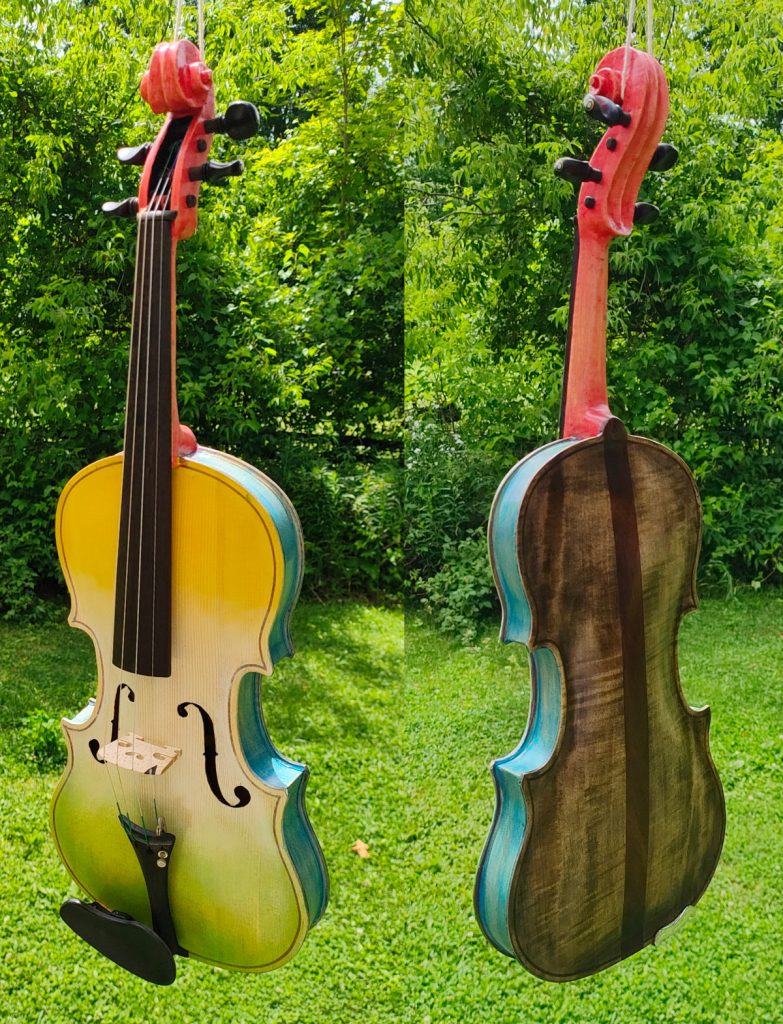
Violin #9 is finally finished and done. It has many coats of Livos Hardwax Oil as the finish, rather than a traditional oil. The back has 15 coats, the belly at least 11, depending on colour. The final coat was Osmo Exterior Gloss.
The colours are those of the Donauschwaben crest.












